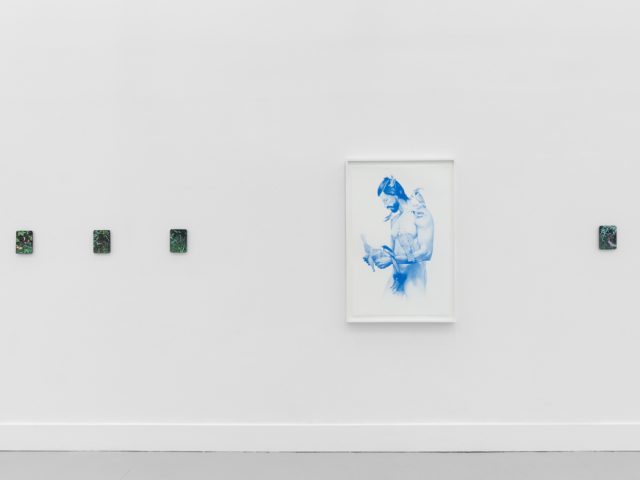September 6 – November 2, 2024
Opening reception:
Friday, September 6, 2024
6 – 8 PM
Central to my work is the notion of the human body as land; a single, inseparable aspect of a much larger whole. Often depicting the geography of ‘the ditch’, these works situate the body (specifically the self) in a nexus of ‘queer re-wildings’. Ditches, cultivated largely by the enforcement of their marginality, exist on the sides of roads near farmers’ fields, or in urban settings in spots left to grow wild or unkempt, becoming stand-ins for queer space.
—Zachari Logan
CLAMP is pleased to present “All of My Little Landscapes,” an exhibition of recent works by Zachari Logan. The exhibition is an exploration of self portraiture through the lens of the natural world utilizing botanic, art historical, mythological, and biblical references.
Zachari Logan, known for his meticulous draftsmanship and poetic visual language, invites viewers into a realm where the boundaries between the human body and the natural world are delicately blurred. This exhibition is a continuation of Logan’s deep engagement with themes of transformation, memory, and the environment. His works act as portals, guiding us through landscapes that are at once familiar and fantastical, intimate and expansive.
The exhibition features a series of new and recent works, including the Transformations series, which portrays lush, verdant environments where figures seem to dissolve and merge with foliage. In other pieces such as “Hive No. 5, Dandelio” and “Pomegranate, Veneto,” Logan’s masterful use of detail draws viewers into an intricate web of flora and fauna, where a microcosm becomes a universe unto itself.
“Spectre No. 1, Dead Flowers” references the Pre-Raphaelite painting “Ophelia” by John Everett Millais; while Logan’s detailed drawing on an old pair of men’s white briefs titled “Secret Garden Series No. 4, Briefs,” is a nod to the (homo)erotic story of Jeremiah and the loincloth from the Bible; and the nude self portrait “The Feeding 5” contemplates St. Francis of Assisi and his preaching to birds in trees.
Ultimately, the body as landscape, and the projection of the landscape onto the human form, is what brings together these disparate works in an array of media.







































































